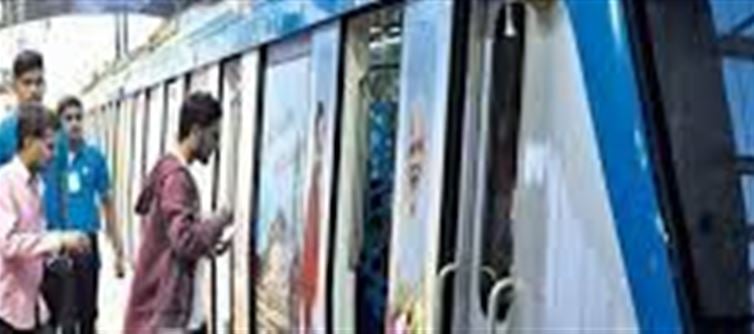
The Hyderabad Metro rail project, one of India’s most ambitious infrastructure projects, is facing a major hurdle. Larsen & Toubro (L&T), the infrastructure giant responsible for constructing the metro system, has formally requested to exit the project due to huge financial losses and a lack of adequate support from the Telangana government.
Key Details of the Issue
1. Financial Losses: L&T has claimed that the project has incurred massive financial losses, which have made the project unsustainable for the company. Despite efforts to recover costs and optimize operations, the financial burden appears to have taken a heavy toll.
2. Lack of government Support: One of the major reasons cited for L&T's exit request is the lack of cooperation and support from the telangana government. L&T has been vocal about its challenges in terms of funding, land acquisition, and regulatory hurdles, which have delayed the project's progress and increased costs.
3. Ongoing Project Costs: The Hyderabad Metro project, which was initially envisioned as a state-of-the-art public transportation system, has faced cost overruns and delays. The initial budget and timelines have been significantly exceeded, creating a financial strain on the construction firm.
Background of the hyderabad Metro Project
· The Hyderabad Metro rail project was launched with great expectations to provide a modern and efficient mode of public transportation for one of India's fastest-growing cities. The project aims to reduce traffic congestion, lower pollution levels, and provide a more sustainable alternative to road-based transport.
· The project, which began in 2012, is being built in multiple phases. It spans over 69 km and is expected to be one of the largest metro systems in the country once completed.
· L&T was initially responsible for the design, construction, and operation of the metro rail network, with plans to hand over the system to the state government after a set period.
Challenges Leading to L&T’s Request to Exit
1. Delays and Budget Overruns: The hyderabad Metro project has faced several delays, which have led to an increase in the project’s costs. While the initial cost was estimated at ₹14,000 crore, it has now ballooned significantly, and the project's timelines have been pushed back repeatedly.
2. Political and Bureaucratic Hurdles: Issues related to land acquisition, clearances, and coordination between the state government and the metro authorities have added to the delays. These obstacles have made it difficult for L&T to maintain its profitability in the long run.
3. Debt Issues: L&T has incurred significant debt in order to fund the construction of the metro network. With rising costs and a lack of sufficient support from the government, the company has been unable to recover its investment, further exacerbating the financial strain.
4. Reduced Ridership: While the metro system aims to provide a world-class commuting experience, the ridership has been lower than anticipated, further affecting revenue projections. The slow growth of commuter numbers, coupled with high operating costs, has made the project financially unfeasible.
What’s Next for the hyderabad Metro Project?
· Exit Plan: L&T’s formal request to exit the project puts the telangana government in a difficult position. While the government will likely seek alternative solutions, such as finding a new private partner or taking over the operations, the future of the project remains uncertain.
· Government Intervention: The telangana government may need to step in and either renegotiate the terms of the agreement with L&T or take the project forward through public funding. The state may also need to address the issues around public-private partnership (PPP) models, as they have proven difficult to manage in this case.
· Public Impact: The delay in completing the metro network will likely have a direct impact on commuters in Hyderabad. The metro is expected to provide a much-needed alternative to the city’s heavily congested roads, but until the project is completed, the benefits of the system will remain limited.
Conclusion
The Hyderabad Metro rail project is at a critical juncture, with Larsen & Toubro’s exit potentially throwing the future of the project into disarray. The combination of financial losses, delays, and lack of government support has led to this unprecedented request. Moving forward, it will be up to the telangana government to find a solution that keeps the project on track and ensures its completion.
As of now, the metro's completion and its potential impact on Hyderabad's transportation infrastructure are both uncertain, leaving many wondering what the future holds for the ambitious metro network.
Disclaimer:
The views and opinions expressed in this article are those of the author and do not necessarily reflect the official policy or position of any agency, organization, employer, or company. All information provided is for general informational purposes only. While every effort has been made to ensure accuracy, we make no representations or warranties of any kind, express or implied, about the completeness, reliability, or suitability of the information contained herein. Readers are advised to verify facts and seek professional advice where necessary. Any reliance placed on such information is strictly at the reader’s own risk.
.jpg)




 click and follow Indiaherald WhatsApp channel
click and follow Indiaherald WhatsApp channel